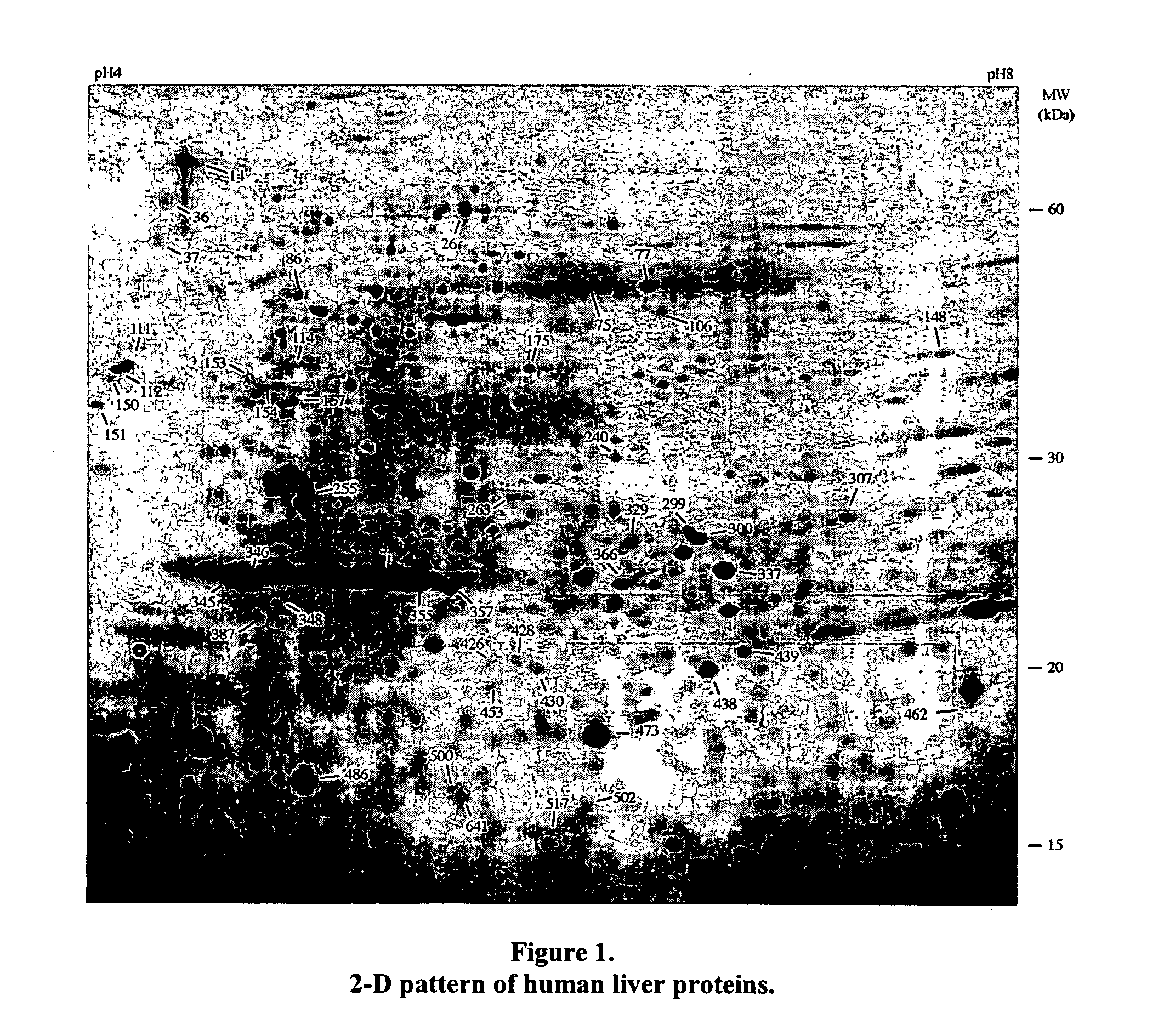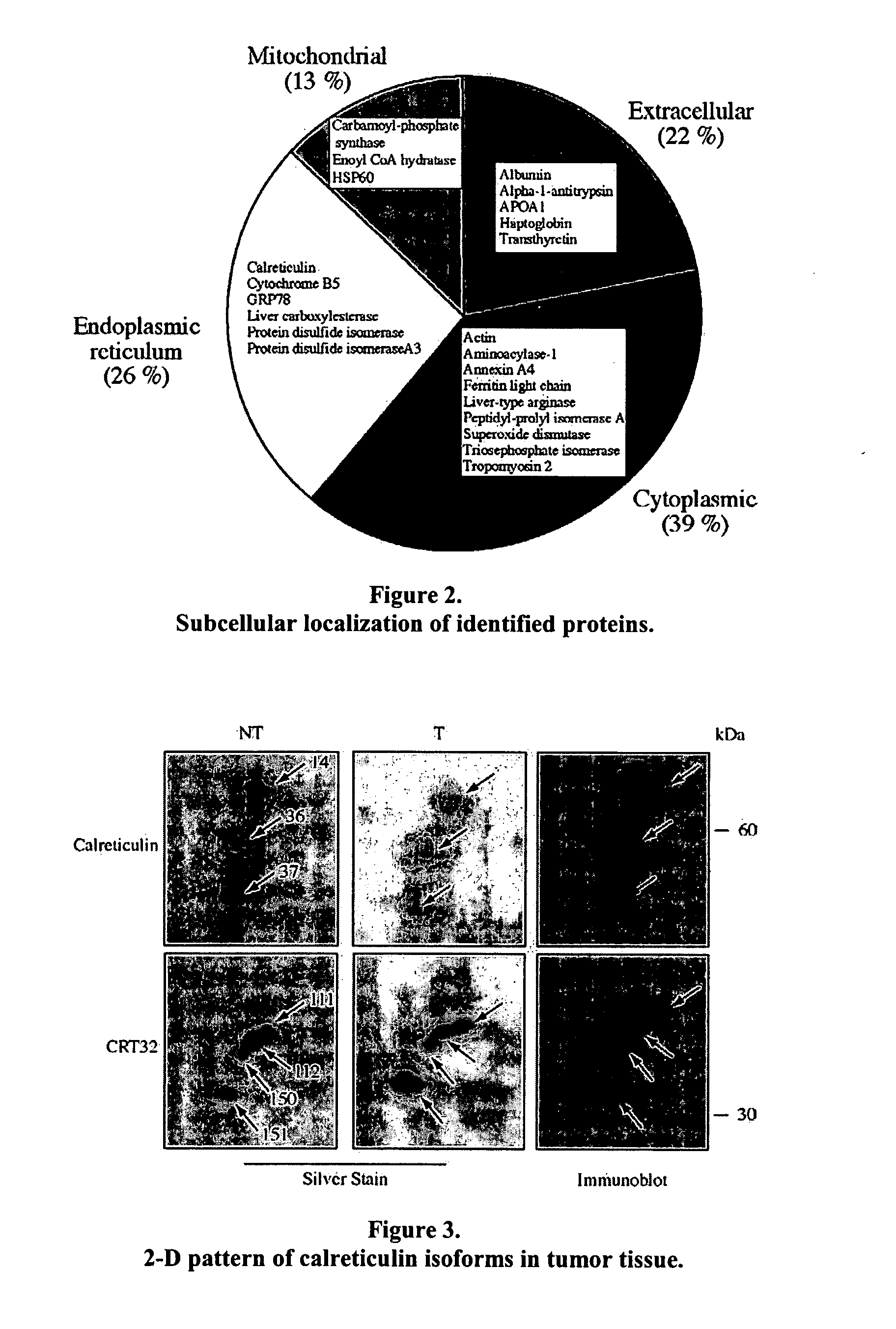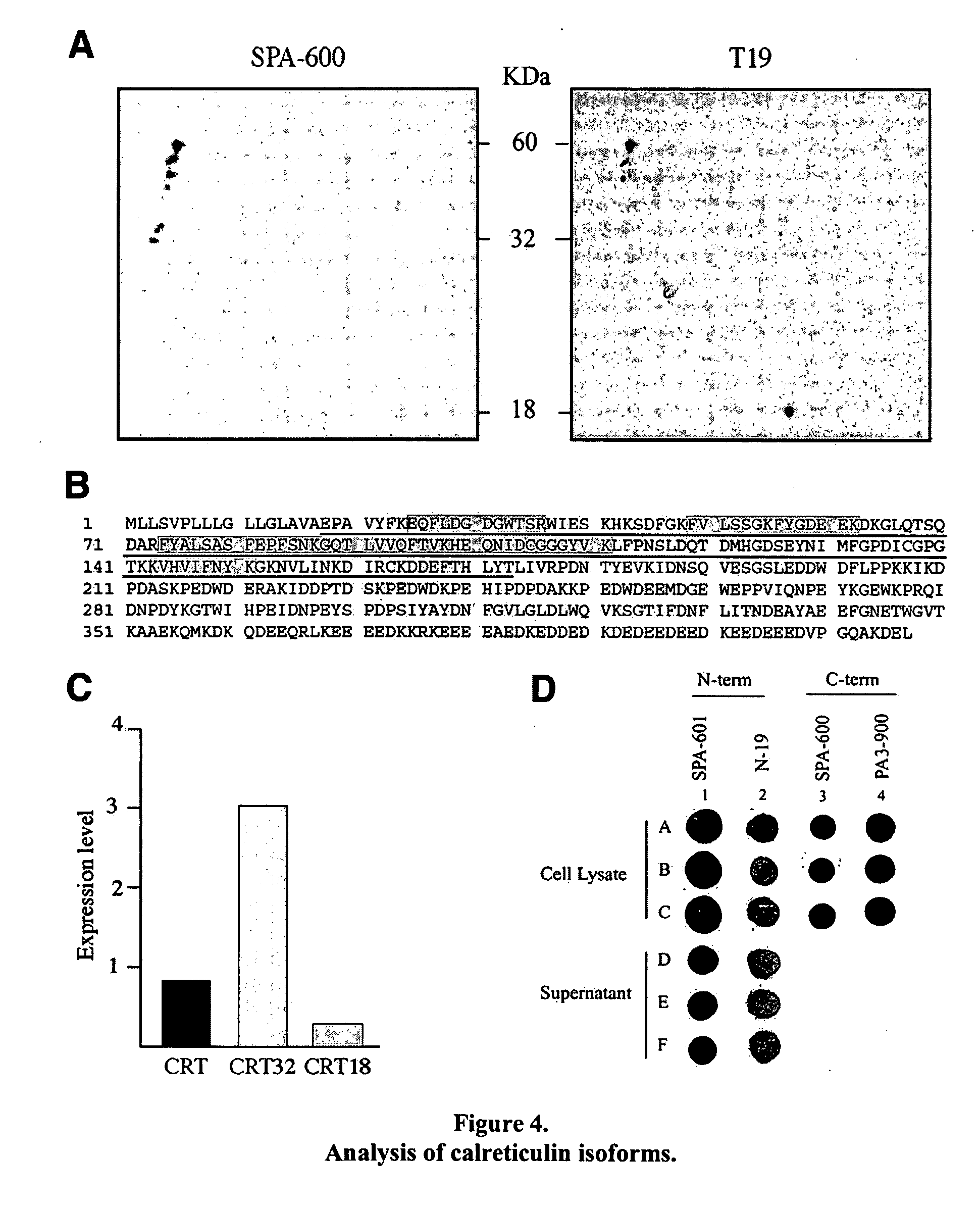Liver cancer biomarkers
a biomarker and liver cancer technology, applied in the field of liver cancer biomarkers, can solve the problems of inability to use afp as a marker, overshadowing its us
- Summary
- Abstract
- Description
- Claims
- Application Information
AI Technical Summary
Benefits of technology
Problems solved by technology
Method used
Image
Examples
Embodiment Construction
[0018] 1. Definitions.
[0019]“Altered level” as used with respect to marker proteins herein refers to an increased level (e.g., a one or two fold increase, or more) or a decreased level (e.g., a one or two-fold decrease, or more) in the quantity of marker protein detectable in or via a biological sample from a subject, as compared to a level of marker protein in a corresponding subject not afflicted with a liver disease such as liver cancer.
[0020]“Biological sample” as used herein refers to any material taken from the body of a subject which carries the target compound or compounds of the tests described herein, including both tissue samples and biological fluids such as blood samples, saliva samples, urine samples, etc.
[0021]“Blood sample” as used herein refers to whole blood or any fraction thereof that contains detectable levels of marker proteins therein (if marker proteins are present in the whole blood sample from which said fraction is obtained), and in particular embodimen...
PUM
| Property | Measurement | Unit |
|---|---|---|
| pH | aaaaa | aaaaa |
| pH | aaaaa | aaaaa |
| pH | aaaaa | aaaaa |
Abstract
Description
Claims
Application Information
 Login to View More
Login to View More - R&D
- Intellectual Property
- Life Sciences
- Materials
- Tech Scout
- Unparalleled Data Quality
- Higher Quality Content
- 60% Fewer Hallucinations
Browse by: Latest US Patents, China's latest patents, Technical Efficacy Thesaurus, Application Domain, Technology Topic, Popular Technical Reports.
© 2025 PatSnap. All rights reserved.Legal|Privacy policy|Modern Slavery Act Transparency Statement|Sitemap|About US| Contact US: help@patsnap.com



